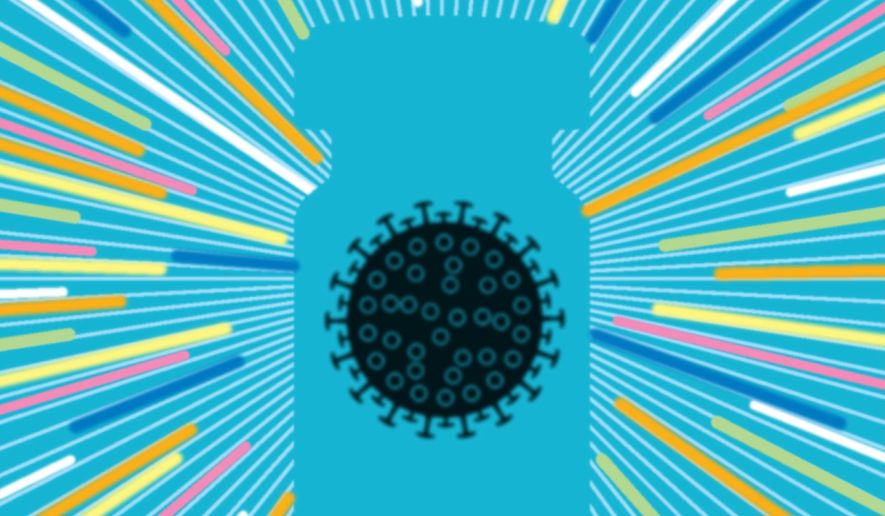OPINION:
At the beginning of the COVID-19 pandemic, accurate and available testing, therapeutics and a vaccine were only faint hopes over the distant horizon.
Operation Warp Speed recognized that all of the members of the health care ecosystem (the innovative biopharmaceutical industry, academia, government, transnational organizations and providers) had to work as a team to solve the many difficult scientific and public health problems created by a new, highly infectious and deadly virus.
Right now, we have two vaccines via Emergency Use Authorization (EUA) and are well under way to inoculating our priority populations most at risk of contracting and dying from COVID-19 (health care workers, seniors in assisted living facilities, police officers, fire fighters, teachers, transit workers, etc.). It is likely both of these vaccines will move forward to full FDA approval by the spring of 2021. But even under continuing EUAs there should be more than enough quantity to move onto those with pre-existing conditions and age 65+ early in the new year.
Even operating under continuing EUAs, the general population should be able to begin rolling up their sleeves as the season changes. It will be a welcome Spring Awakening thanks to mRNA technology specifically and the health care ecosystem partnerships made possible by Operation Warp Speed.
Warp Speed had to design expedited regulatory review criteria and coordinate manufacturing capabilities on a global scale. Operation Warp Speed’s success was due to its explicit focus on two core functions: as collegial facilitator and financial underwriter.
By “de-risking” research and development costs and the huge potential liability of pre-FDA review manufacturing, Operation Warp Speed allowed development of diagnostics, therapeutics and vaccines to take place without the usual roadblocks. Amazingly, in under a year we can test, treat and vaccinate. We are no longer mitigating the COVID-19 virus, we are containing it. And soon we will, in large part because of Operation Warp Speed, conquer it.
We’ve known for months about the unique logistical challenges of the enhanced refrigeration required for both vaccines, but didn’t aggressively coordinate federal and state resources to create best practice solutions. The CDC waited until December 1st to finalize its recommendations on who should be offered COVID-19 vaccination in the initial phase of the COVID-19 vaccination program.
Now states are scrambling to decide whether to accept the initial federal guidelines or create their own. These decisions impact not just who gets vaccinated in what sequence but also where the shipments of the two vaccines should go and which vaccine is most appropriate for each point of access. Both vaccines require specified refrigeration and this will impact which of the two vaccines is most appropriate for any given location.
The Big Unknown is the desire, on the part of the American public, to get vaccinated. That we have to convince large segments of the population about the safety, effectiveness — and urgency of COVID-19 vaccines speaks to the need for robust and targeted public education campaigns.
For example, Vice President Mike Pence’s public display of confidence demonstrated by his televised inoculation (alongside his wife and the surgeon general) sends an important message to his core constituency — many of whom are vaccine skeptics — that now is not the time to allow lingering political animus to trump public health priorities.
Another group in need of priority communications efforts are communities of color. Their suspicions of government health programs are anchored in historical fact and must be addressed forcefully and with respect. This is imperative since these communities also suffer from significantly higher rates of infection and virus-related deaths.
Another lingering issue is ensuring that initial vaccinations are followed up by the necessary second round of shots. We need to develop creative mechanisms to remind Americans that (at least for the first two vaccines) this isn’t a “one and done” proposition. Health and Human Services Secretary-designate Xavier Bercerra has listed his top three priorities as “COVID, COVID, COVID.” This must include the immediate development and execution of multi-purpose and multi-platform public education campaigns.
Having an abundance of safe and effective vaccines is a tremendous victory. Failing to coordinate access and convince our fellow citizens to roll up their sleeves and do the right thing would be an inexcusable failure.
• Peter J. Pitts, a former FDA associate commissioner, is president of the Center for Medicine in the Public Interest and a visiting professor at the University of Paris Descartes School of Medicine.




Please read our comment policy before commenting.